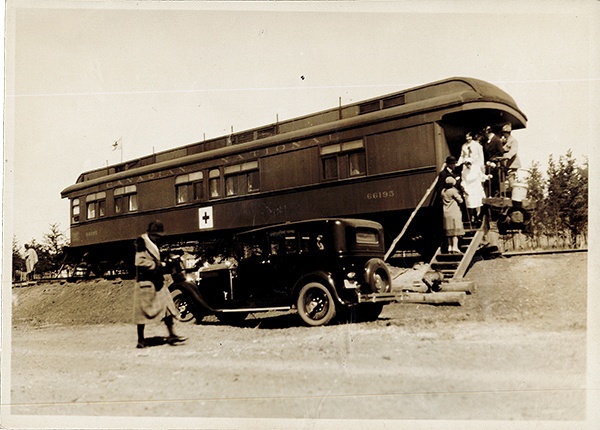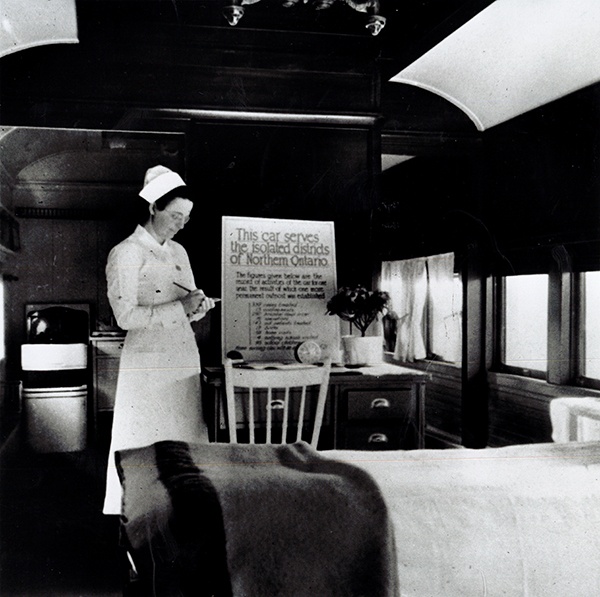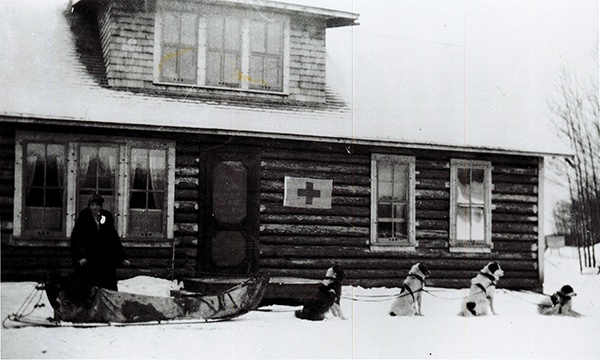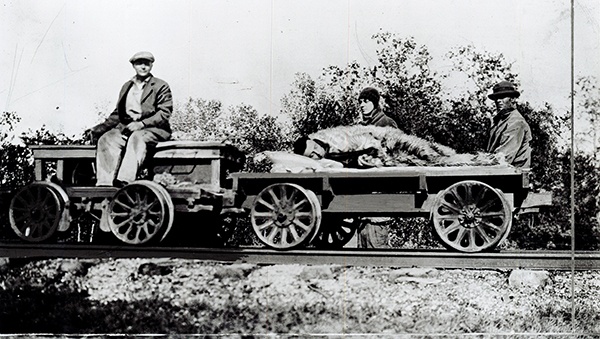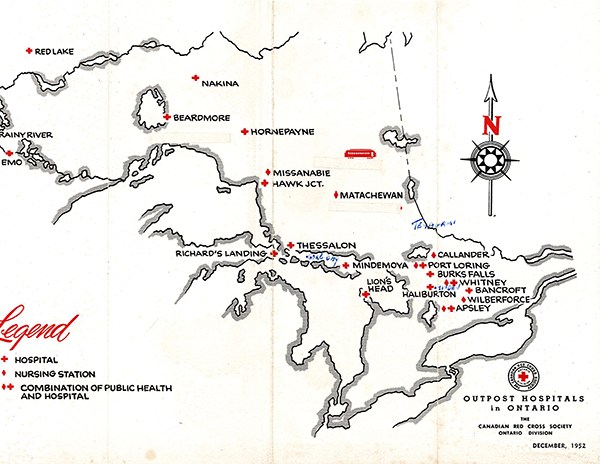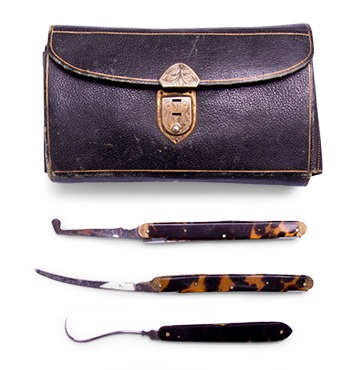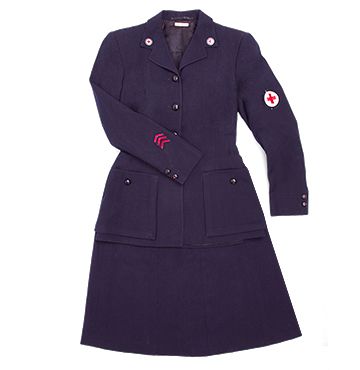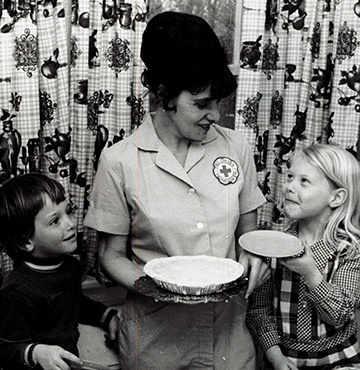Outpost on Wheels
One of the central pillars of the Canadian Red Cross’ first peacetime public health policy, launched in 1919-20, was its concern for the health of mothers and children in rural and remote areas of Canada. The outpost hospital and nursing station program was an effective means to address this need. One of the most memorable outpost hospitals was the one pictured here, located in a converted Canadian National Railway train carriage that travelled the railway lines in Northern Ontario during the 1920s and 1930s.
In early twentieth-century Canada there was no such thing as public hospital insurance or Medicare, meaning that Canadians who could not afford to pay for medical treatment often had to go without. Another obstacle was lack of access: outside of the cities, citizens relied on local general practitioners, but in remote and new settlement areas there might be no physician for hundreds of kilometres.
Although this lack of medical services was a problem for many reasons, the Canadian Red Cross was especially concerned about its impact on women and children. Mothers lacked prenatal and postnatal care; infants and young children were at risk from an array of deadly childhood diseases. The results were obvious: Canada’s appallingly high maternal and infant mortality rates.
"The outpost nurse did most of her work via house-calls, travelling by foot, horseback, dog sled, ski, hand-powered rail car, or any other method available."
In partnership with these small communities, provincial Red Cross divisions established small outpost hospitals or nursing stations where patients could receive care at a nominal cost (or if necessary, for free). Usually located in a converted house, the outposts were staffed by hospital-trained nurses -- usually a single nurse working alone. The outpost nurse had a few beds to offer in-patient care if necessary, but did most of her work via house-calls, travelling by foot, horseback, dog sled, ski, hand-powered rail car, or any other method available.
Outpost nurses were theoretically supervised by a regional physician, but the vast distances (and lack of good roads) involved meant that they had to exercise a great deal of ingenuity and initiative in their work. In addition to nursing, they served as unofficial midwives, diagnosticians, and public health educators. In some extreme emergencies they performed basic surgeries.
The outpost program provided crucial health care for rural and remote communities in nearly every province. Some communities took over their outpost when population growth or improved prosperity made it possible. Others remained under Red Cross direction until the advent of publicly-funded hospital insurance and Medicare in the late 1950s-1960s.
One of the central pillars of the Canadian Red Cross’ first peacetime public health policy, launched in 1919-20, was its concern for the health of mothers and children in rural and remote areas of Canada. The outpost hospital and nursing station program was an effective means to address this need. One of the most memorable outpost hospitals was the one pictured here, located in a converted Canadian National Railway train carriage that travelled the railway lines in Northern Ontario during the 1920s and 1930s.
In early twentieth-century Canada there was no such thing as public hospital insurance or Medicare, meaning that Canadians who could not afford to pay for medical treatment often had to go without. Another obstacle was lack of access: outside of the cities, citizens relied on local general practitioners, but in remote and new settlement areas there might be no physician for hundreds of kilometres.
Although this lack of medical services was a problem for many reasons, the Canadian Red Cross was especially concerned about its impact on women and children. Mothers lacked prenatal and postnatal care; infants and young children were at risk from an array of deadly childhood diseases. The results were obvious: Canada’s appallingly high maternal and infant mortality rates.
"The outpost nurse did most of her work via house-calls, travelling by foot, horseback, dog sled, ski, hand-powered rail car, or any other method available."
In partnership with these small communities, provincial Red Cross divisions established small outpost hospitals or nursing stations where patients could receive care at a nominal cost (or if necessary, for free). Usually located in a converted house, the outposts were staffed by hospital-trained nurses -- usually a single nurse working alone. The outpost nurse had a few beds to offer in-patient care if necessary, but did most of her work via house-calls, travelling by foot, horseback, dog sled, ski, hand-powered rail car, or any other method available.
Outpost nurses were theoretically supervised by a regional physician, but the vast distances (and lack of good roads) involved meant that they had to exercise a great deal of ingenuity and initiative in their work. In addition to nursing, they served as unofficial midwives, diagnosticians, and public health educators. In some extreme emergencies they performed basic surgeries.
The outpost program provided crucial health care for rural and remote communities in nearly every province. Some communities took over their outpost when population growth or improved prosperity made it possible. Others remained under Red Cross direction until the advent of publicly-funded hospital insurance and Medicare in the late 1950s-1960s.

